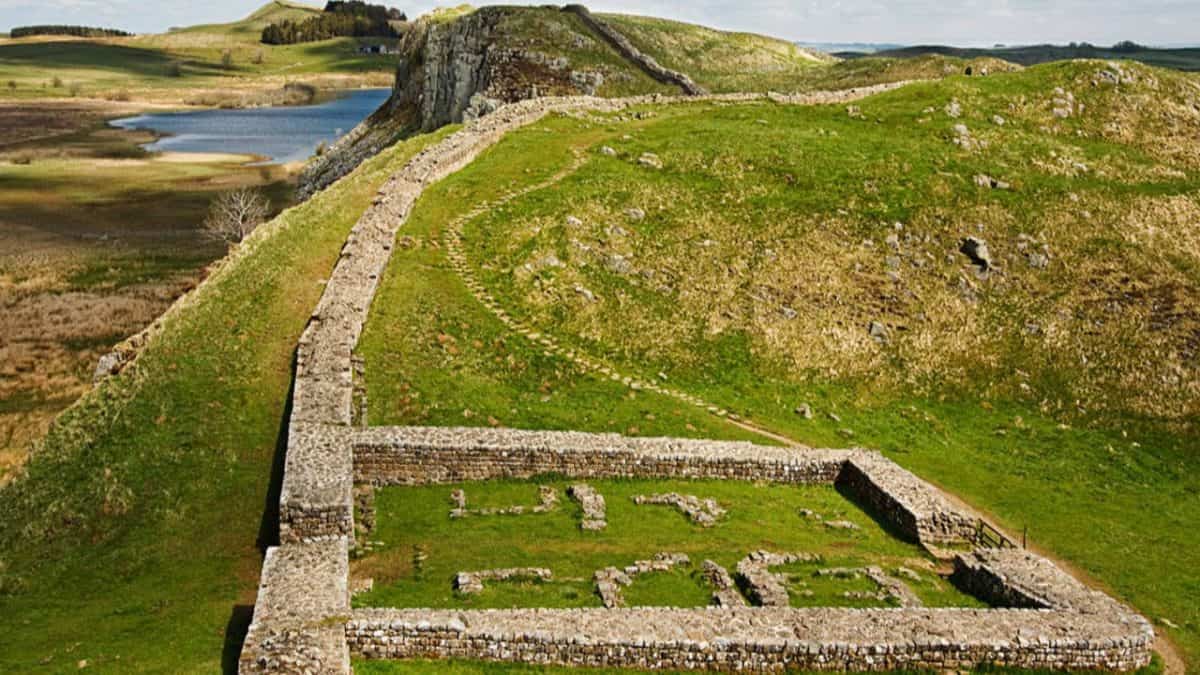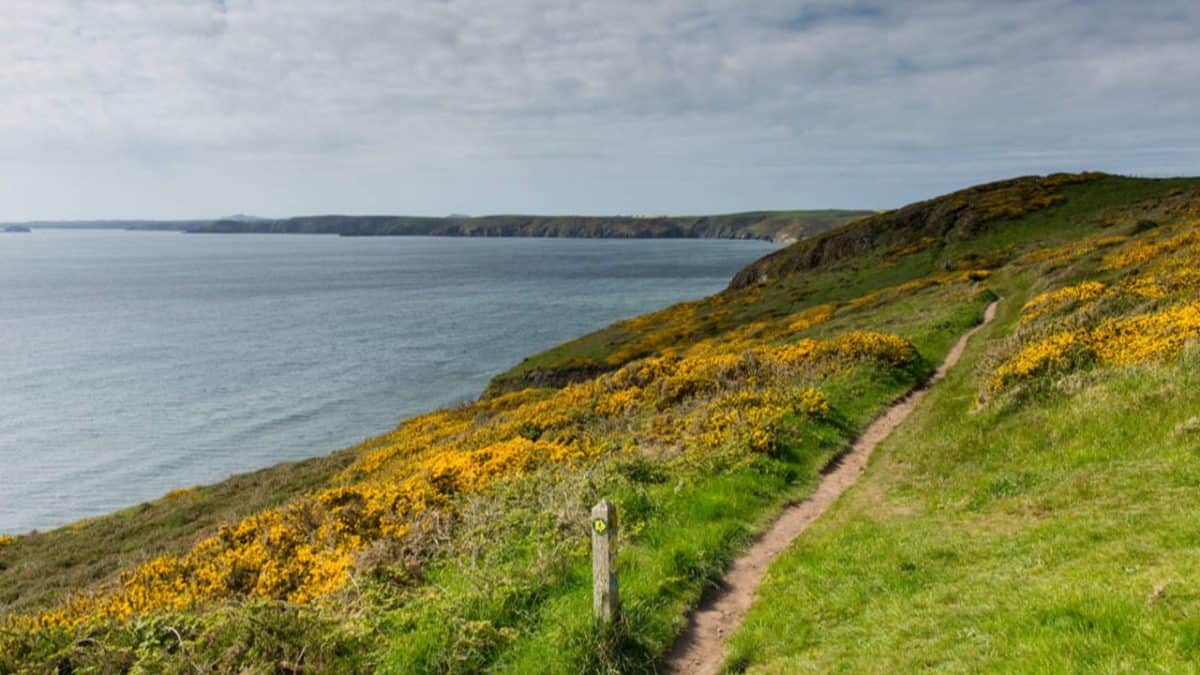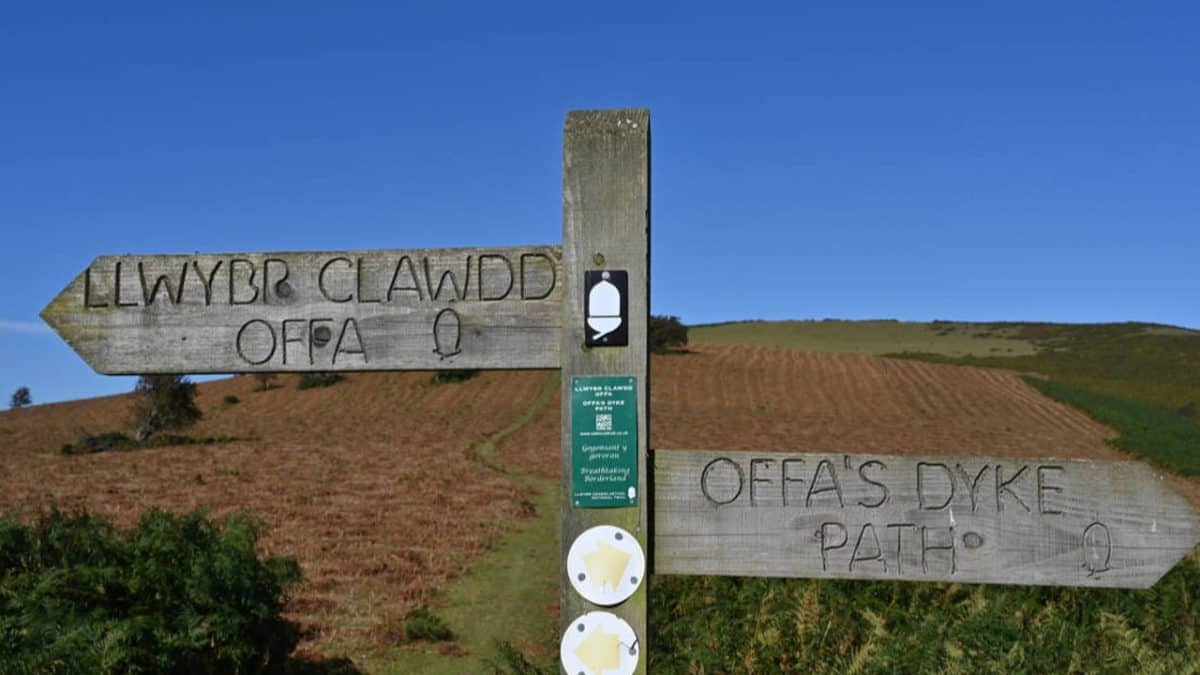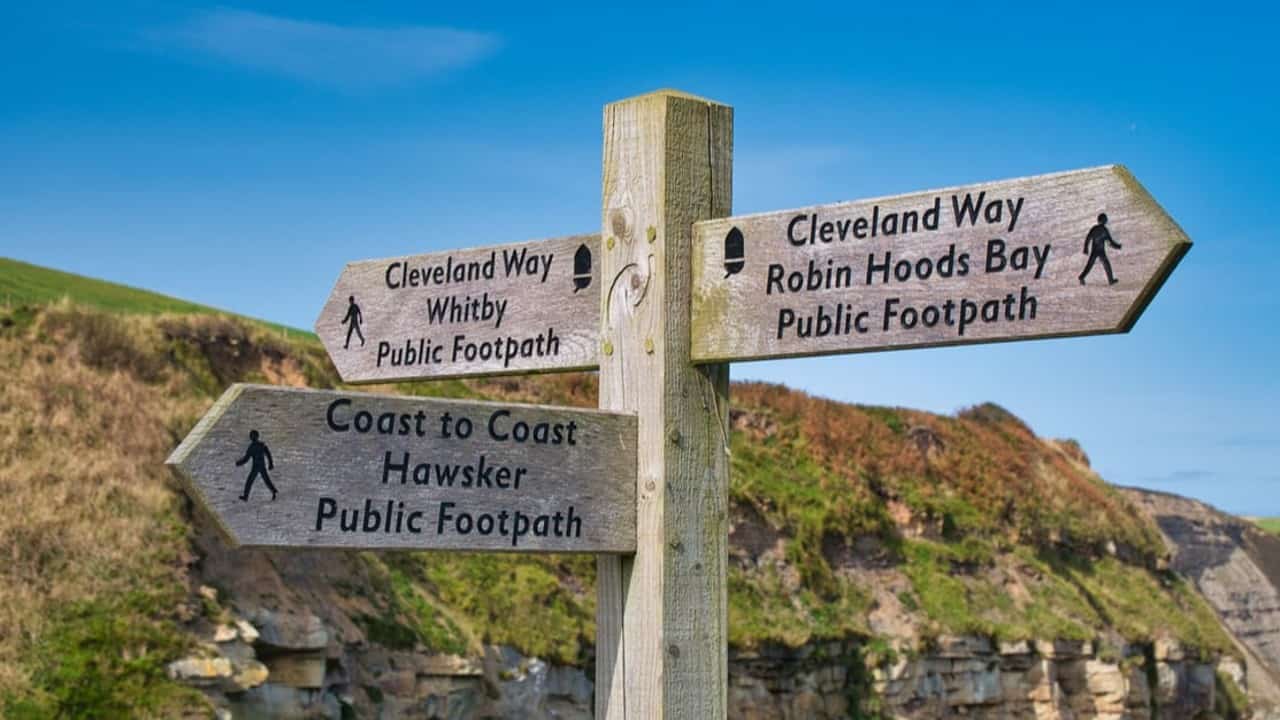Hiking the Coast to Coast Walk is one of the best ways to cross England on foot and explore the country’s fascinating history. Thanks to its picturesque landscape made of lush greenery and rolling hills, the Coast to Coast Walk has become one of the most famous walks in the world.
In fact, it’s so popular that it can be hard to find accommodation along the route during the holiday season.
This can make it impossible to plan your itinerary. But don’t have to give up on your walking holiday in the UK just yet! If walking the Coast to Coast Walk is not an option this year, here are 5 excellent alternatives.
St Oswald’s Way

St Oswald’s Way is a 97-mile walk that runs through the gorgeous Northumberland countryside and follows the stunning coastline of North East England.
The main route stretches from the historic village of Chollerford, which is situated right next to Hadrian’s Wall and runs all the way to the Holy Island of Lindisfarne. However, many choose to walk the St Oswald’s Way in the opposite direction.
Along the route, you will find lovely farmland, quaint villages, scenic river valleys, and medieval castles—what’s not to love?
The path is named after Saint Oswald—the King of Northumbria who helped bring Christianity to his people in the early 7th century. It links historic places that are associated with his rule.
Like the Camino de Santiago, St Oswald’s Way is classed as a religious pilgrimage. However, it is popular among hikers from all walks of life.
It takes between 6 to 8 days to complete the walk. Each stage is between 13 to 20 miles. There are plenty of accommodation options along the trail.
The terrain is a bit challenging, so it requires a good level of fitness. Preparation is vital for the St Oswald’s Way as the latter stages of the trail explore some remote landscapes.
Make sure to bring navigational equipment, waterproof layers, and enough food and water.
St Oswald Way coincides with the Northumberland Coast Path—another great alternative to the Coast to Coast Walk.
Hadrian’s Wall Path

The Hadrian’s Wall Path is a true alternative to the Coast to Coast as it starts and ends at different sides of the country by the sea.
Built in 144 AD, Hadrian’s Wall served as the northern border of the Roman empire for over 3 centuries. In 1987, the remnants of this impressive Roman fortification were listed as a UNESCO World Heritage Site.
Stretching from coast to coast across northern England, this 84-mile trail allows you to explore everything that is left of the legendary monument. You will discover the remains of the towns, turrets, towers, and forts that kept watch over the Wall.
Along the route, there are also a handful of interesting museums and archaeological sites, many of which remain unexcavated. One could say that the Hadrian’s Wall Path is the closest thing we have to time travel.
But this awe-inspiring walk doesn’t revolve only around history. Other highlights of the trail include the Solway salt marshes and their lovely wildlife, Whin Sill escarpment, River Tyne bridges, outstanding pubs, and spectacular views of the rugged landscape.
The Hadrian’s Wall Path is a relatively easy trail. Anyone who is reasonably fit can walk it. You can walk it in either direction, and there are plenty of accommodation options along the trail.
Most walkers complete the trail in 5 to 10 days. Daily distances vary between 6 and 15 miles. If you want to make the full coast-to-coast walk to South Shields, you will need an extra day.
The Hadrian’s Wall Path is well-signposted. However, much of the trail covers wilderness and wildland, so it’s a good idea to bring a guidebook, compass, and OS maps.
The Pembrokeshire Coast Path

The Pembrokeshire Coast Path is a 185-mile National Trail that runs along the most scenic coastline in the UK. It lies almost entirely within the Pembrokeshire Coast National Park.
From winding estuaries and wide-open beaches to sheltered coves and rugged cliff tops, the Pembrokeshire Coast Path covers almost every kind of maritime landscape.
It offers gorgeous views of volcanic headlines and undulating red sandstone bays. Along the trail, you can also see evidence of human activity from Neolithic times.
You can walk the Pembrokeshire Coast Path all year round. But, even though it has something to offer every season, most hikers prefer to complete the trail in spring or fall.
During these seasons, the trail displays an array of coastal wildlife and wildflowers. Fall is best for seeing seal pups and migrating birds on the trail.
There are a lot of ascents and descents on the trail, so completing the trail in one go is a bit of a challenge. On average, it takes 10 to 15 days to complete the trail.
But, even if you decide to cover shorter daily distances, the walk is still demanding. Luckily, the coastal bus service covers the entire Pembrokeshire Coastal Path, so you can always hitch a ride if you get too exhausted.
The Pennine Way

Of all the 15 National Trails, the Pennine Way is likely the toughest and the most famous one. Dating back to 1965, it’s also the oldest.
This 268-mile hike crosses some of the finest upland landscapes in the UK. The trail stretches from the Peak District all the way to the Scottish Borders.
It follows public footpaths through villages and valleys, across bogs and moorlands, over rolling hills and mountains. Even though it’s challenging, the Pennine Way is one of the best ways to explore the remote English countryside.
Like the Coast to Coast Walk, the Pennine Way can be very busy in summer. Moreover, there aren’t many accommodation options along some of the sections of the trail. If you want to avoid crowds, it’s best to walk the trail in May or September.
It takes at least two weeks to complete the trail. But, because there is plenty to do and see along the Pennine Way, such as sample hand-pulled ales and explore quaint English market towns, it may be best to walk the trail at a leisurely pace and complete it in three weeks.
Offa’s Dyke Path

Offa’s Dyke is a gorgeous 177-mile trail that runs alongside the border between Wales and England. It starts at the Severn Estuary and finishes at Prestatyn. However, it’s also possible to walk the trail north to south.
In July 2021, the walk will celebrate its 50 year anniversary. Provided that the Covid-19 situation improves, the Ramblers Cymru and other trail partners plan to hold a number of special events and walking festivals along Offa’s Dyke Path this summer. The visitors centre has also been revamped for the occasion.
The walk closely follows the earthwork monument of Offa’s Dyke for roughly 40 miles. This unique structure dates back all the way to the 8th century.
Offa’s Dyke Path waves through the leafy woodlands, heather-clad mountains, and rolling valleys of three Areas of Outstanding Natural Beauty and eight countries.
It takes about 12 days to complete the hike. There is plenty of accommodation en route. Moreover, all of the pretty market towns along the trail are linked by public transportation.
Any Thoughts
These are my suggestions for an alternative to the Coast to Coast. Do you have any other suggestions? Let me know in the comments below.

I love hiking, backpacking, and camping. From the Camino de Santiago to the West Highland Way in Scotland or simply a great day hike on the weekend. Hiking refreshes me, my mind, and keeps my body reasonably fit. So far I have walked three Camino routes and many other long distance hikes in the UK, Canada, and around the rest of Europe. One of the best was my hike up Ben Nevis.

